There’s a line in my book that reads, “I have been so many things along my curious journey: a poor boy, a nigger, a Yale man, a Harvard man, a faggot, a Christian, a crack baby (alleged), the Spawn of Satan, the Second Coming, Casey.” My reading tends to be torn between—or at the nexus of—all these little (or ginormous) vestibules of myself.
Sobonfu Some’s The Spirit of Intimacy helped me rethink ritual and relationship. Lucille Clifton’s sublime poems in Good Times gave me many nuggets of joy during a difficult year. Richard Siken’s Crush was so devastating when I first read it in 2016, that I try to read it again every year. I don’t think I’ll do the same for Rimbaud’s A Season in Hell, though I’m glad I spent time with it, once.
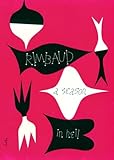
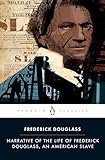 I was glad to write my book without first reading Frederick Douglass’s Narrative, though I was even more glad to finally read it once I finished, and to know that I was writing in that tradition. Also, it’s hard to complain about anything in my writing life when I compare it to Mr. Douglass’s.
I was glad to write my book without first reading Frederick Douglass’s Narrative, though I was even more glad to finally read it once I finished, and to know that I was writing in that tradition. Also, it’s hard to complain about anything in my writing life when I compare it to Mr. Douglass’s.
 A critic told me, this summer, that my book reminded her of reading Beckett’s Endgame, which I took as a compliment. I read the play myself soon thereafter, and I suppose it was a compliment, though I am a bit less sure now.
A critic told me, this summer, that my book reminded her of reading Beckett’s Endgame, which I took as a compliment. I read the play myself soon thereafter, and I suppose it was a compliment, though I am a bit less sure now.
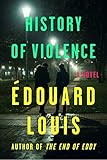

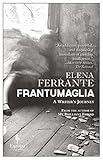 Edouard Louis’s History of Violence is a book I keep evangelizing about, along with Maggie Nelson’s The Argonauts. Everyone seems to evangelize about Elena Ferrante’s novels, but I have found her Fratumaglia to be so vital as an example of making a creative life on your own terms. Rilke’s Letters to a Young Poet did the same. So too did The Gospel According to Luke. I think it was Oscar Wilde who suggested Jesus was an artist. Something like that.
Edouard Louis’s History of Violence is a book I keep evangelizing about, along with Maggie Nelson’s The Argonauts. Everyone seems to evangelize about Elena Ferrante’s novels, but I have found her Fratumaglia to be so vital as an example of making a creative life on your own terms. Rilke’s Letters to a Young Poet did the same. So too did The Gospel According to Luke. I think it was Oscar Wilde who suggested Jesus was an artist. Something like that.

 Speaking of Jesus, Denis Johnson’s Jesus’ Son knocked me out. The way he describes the sun. I mean. Yes. So much of my work is trying to take old images, old stories, and bring new language to them—maybe that’s any writer’s job. Johnson got it done, as did Anne Carson with Autobiography of Red. Loved it so much I named a character in my book “Red.”
Speaking of Jesus, Denis Johnson’s Jesus’ Son knocked me out. The way he describes the sun. I mean. Yes. So much of my work is trying to take old images, old stories, and bring new language to them—maybe that’s any writer’s job. Johnson got it done, as did Anne Carson with Autobiography of Red. Loved it so much I named a character in my book “Red.”

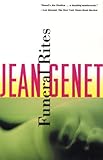
 Perhaps the most important books I read this year were: Jane Austen’s Persuasion, Hemingway’s A Farewell to Arms, Jean Genet’s Funeral Rites, and Alice Walker’s The Color Purple. Not important in terms of being the greatest books (though I do believe The Color Purple might be one of the most important queer books ever). These books were important because they helped me better situate myself in certain lineages—or rather, know which lineages I would like to belong to—Genet and Walker, rather than Austen and Hemingway. Not that I am conflating the four into two pairs. But there seemed to be more life and danger and strangeness in the former, and that’s the kind of work I’d like to read and write.
Perhaps the most important books I read this year were: Jane Austen’s Persuasion, Hemingway’s A Farewell to Arms, Jean Genet’s Funeral Rites, and Alice Walker’s The Color Purple. Not important in terms of being the greatest books (though I do believe The Color Purple might be one of the most important queer books ever). These books were important because they helped me better situate myself in certain lineages—or rather, know which lineages I would like to belong to—Genet and Walker, rather than Austen and Hemingway. Not that I am conflating the four into two pairs. But there seemed to be more life and danger and strangeness in the former, and that’s the kind of work I’d like to read and write.
More from A Year in Reading 2018
Do you love Year in Reading and the amazing books and arts content that The Millions produces year round? We are asking readers for support to ensure that The Millions can stay vibrant for years to come. Please click here to learn about several simple ways you can support The Millions now.
Don’t miss: A Year in Reading 2017, 2016, 2015, 2014, 2013, 2012, 2011, 2010, 2009, 2008, 2007, 2006, 2005
The post A Year in Reading: Casey Gerald appeared first on The Millions.
Source : A Year in Reading: Casey Gerald










